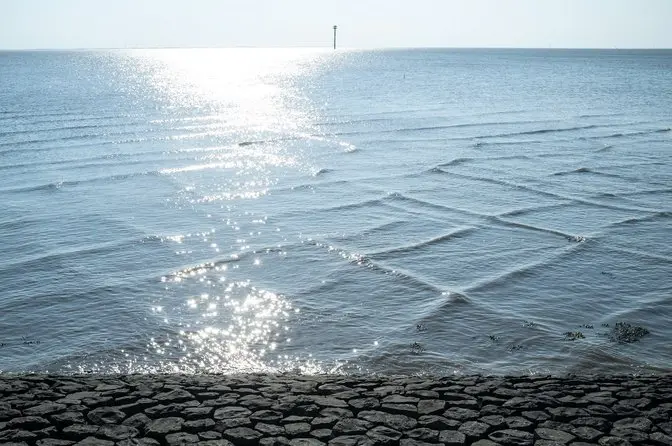The ocean is a mesmerizing force of nature, a place where endless waves dance under the sun and invite us to explore their beauty. Yet, amidst this natural wonder lies a rare and fascinating phenomenon that demands our respect: the square wave, also known as the cross sea.
Imagine looking out at the ocean and seeing the surface transform into a striking pattern of squares or a checkerboard—waves intersecting each other at right angles, creating a surreal quilt-like scene on the water. It’s a stunning sight, one that draws curiosity and awe from visitors, especially at places like the Isle of Rhé off the west coast of France, where this natural spectacle occurs regularly.

But behind this beautiful illusion lies a hidden danger. Square waves form when two strong weather systems send opposing swells crashing into each other at different angles. This meeting of waves creates a grid-like pattern but also generates powerful currents and waves that can reach heights of up to 10 feet (around 3 meters). For swimmers and boaters, this can mean battling unexpected and fierce forces of nature.
What makes square waves particularly perilous is how quickly they can form and vanish, leaving even the most experienced ocean-goers unprepared. Swimmers caught in these waves often feel as if they are swimming against two competing currents, making movement exhausting and escape challenging. Boats navigating these waters may be overwhelmed or even swamped by the unusually high and erratic waves.
So, what should you do if you find yourself facing these extraordinary waves?

The first and most important rule is simple: if you see the ocean’s surface take on that distinctive chessboard pattern, leave the water immediately. Avoid venturing too far out where these waves are most dangerous. If you are already caught in the water, stay calm, float on your back if needed, and try to swim parallel to the shore to escape the currents. Signaling for help is also crucial if you cannot reach land quickly.
This advice isn’t just for experts. Square waves have been linked to a significant number of shipwrecks and drowning incidents worldwide, which highlights the importance of awareness and preparedness. Coastal regions where cross seas frequently occur, such as parts of France, Israel, and even areas in the South Pacific and Atlantic, serve as reminders that the ocean’s moods are diverse and sometimes unpredictable.
Beyond the danger, square waves are a vivid demonstration of the ocean’s dynamic power and the complex interplay of natural forces. The fact that such patterns arise from the meeting of two separate weather systems is a captivating glimpse into the science of waves and how energy moves through water. Waves themselves are born from the energy of wind, storms, and even the gravitational pull of the sun and moon, traveling thousands of miles across ocean basins without the water itself actually moving forward.

Understanding and respecting these forces enriches our experience of the ocean. It transforms our view from mere spectators to curious students of nature’s rhythm. The ocean invites us to marvel at its beauty while reminding us to stay vigilant and safe.
Next time you head to the beach, take a moment to appreciate the science and wonder behind every wave, but also keep an eye out for that one unmistakable sign—the square waves. Seeing that pattern means it’s time to head back to shore, safe and sound, ready to enjoy the ocean again another day.
Subscribe to The Bright Story and step into a world of hope, wonder, and humanity at its best. With unlimited access, discover powerful personal journeys, heartwarming family and animal stories, incredible discoveries, and the everyday kindness that makes life brighter.